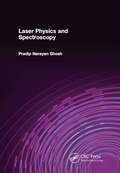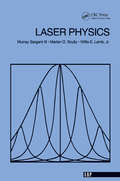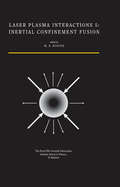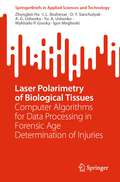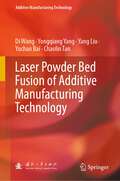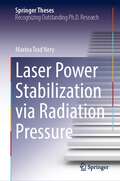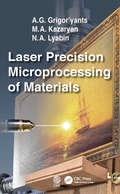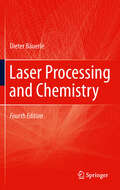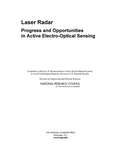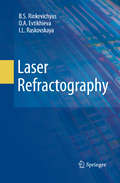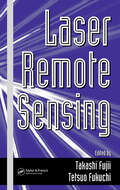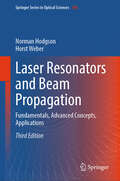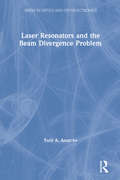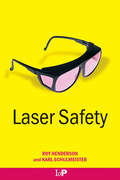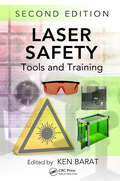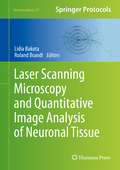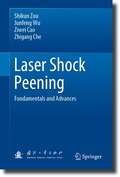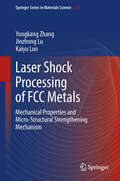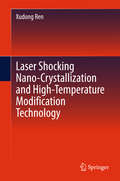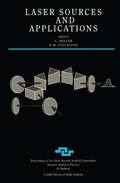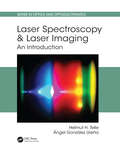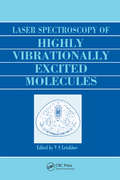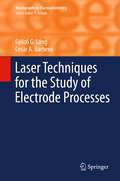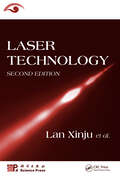- Table View
- List View
Laser Physics and Spectroscopy
by Pradip Narayan GhoshIn this book emphasis is laid on laser including its operation, different types, properties like coherence and monochromaticity, beam propagation, theoretical treatment of atom‐field interaction, semi‐classical laser theory, non‐linear effects, quantum properties, photon concept and coherent states etc. Please note: Taylor & Francis does not sell or distribute the Hardback in India, Pakistan, Nepal, Bhutan, Bangladesh and Sri Lanka.
Laser Physics: Proceedings Of The International Conference On Laser Physics And Quantum Optics
by Iii Sargent MurrayThis book treats the interaction of radiation with matter, particular attention being paid to the laser. Knowledge is assumed of the usual half-year introduction of quantum mechanics found in undergraduate physics curricula. The material can be covered in two semesters, or, alternatively, the first part (Chaps 1-13) can be used as a one-semester course in which quantum mechanical aspects of the electromagnetic field are ignored. Each chapter is accompanied by problems that illustrate the text and give useful (occasionally new) results. Existing laser media are intrinsically quantum mechanical and are most easily studied with the quantum theory. Understanding the laser along these lines enlivens one's understanding of quantum mechanics itself. In fact, the material constitutes a viable, applied alternative for the usual second and third semesters of quantum mechanics.
Laser Plasma Interactions 5: Inertial Confinement Fusion: Proceedings of the Forty Fifth Scottish Universities Summer School in Physics, St. Andrews, August 1994
by M. B. HooperThis volume provides a broad overview in the increasingly important field of laser-plasma interactions. With the growth of research into fusion much international effort is being devoted to the problems of inertial confinement. This collection of lectures provides the novice researcher with the context in which current research papers can be understood.Laser Plasma Interactions 5 is one of the first publications to include recently declassified results from the United States inertial confinement fusion research program and as such is an indispensable reference for those wishing to find out about this previously inaccessible research.Presented by 14 speakers of international repute, the emphasis throughout the volume is on inertial confinement fusion. Topics also covered include plasma radiation and transport processes, diagnostic measurements, dense plasmas, high power lasers and X-ray lasers.
Laser Polarimetry of Biological Tissues: Computer Algorithms for Data Processing in Forensic Age Determination of Injuries (SpringerBriefs in Applied Sciences and Technology)
by A. G. Ushenko Yu. A. Ushenko Igor Meglinski Zhengbin Hu I.L. Bezhenar O.Y. Vanchulyak Mykhailo P. GorskyThis book highlights the results of numerical computer-aided smart methods as part of a comprehensive statistical, correlated, and fractal analysis of laser polarimetry. It includes a comprehensive approach to differentiation of lifelong or postmortem origin of injuries and determination of their antiquity based on the analysis of statistical and spatiotemporal frequency evolution of photometric, polarization, and phase parameters of laser images of histological sections of the skin of biomannequins. It discusses the relationship between the coordinate distributions of the intensity of laser images from skin tissues of biomannequins and the nature of its damage. It presents the analysis of relationships between changes in the mean and variance of coordinate distributions of azimuths and ellipticity of polarization images of histological skin sections and the time intervals after injury. Complex differentiation of lifelong and postmortem skin injuries of biomannequins and establishment of their time intervals throughout the entire monitoring interval of changes in the mean and variance of coordinate distributions of phase shifts between orthogonal components of the amplitude of laser images of a series of corresponding histological sections are also presented in this book.
Laser Powder Bed Fusion of Additive Manufacturing Technology (Additive Manufacturing Technology)
by Yang Liu Di Wang Yuchao Bai Yongqiang Yang Chaolin TanThis book systematically introduces the powder bed laser melting technology and its application and summarizes the author's team's experience in scientific research, engineering development, and data accumulation in recent 15 years. It includes in-depth theoretical analysis and a lot of engineering experience in equipment debugging, process development, and material testing. The book takes the powder bed laser melting technology as the object and divides the content into 15 chapters. It is used as technical learning materials for researchers and engineering development personnel engaged in metal 3D printing.
Laser Power Stabilization via Radiation Pressure (Springer Theses)
by Marina Trad NeryThis book offers a comprehensive and complete description of a new scheme to stabilize the power of a laser on a level needed for high precision metrology experiments. The novel aspect of the scheme is sensing power fluctuations via the radiation pressure driven motion they induce on a micro-oscillator mirror. It is shown that the proposed technique can result in higher signals for power fluctuations than what is achieved by a direct power detection, and also that it enables the generation of a strong bright squeezed beam. The book starts with the basics of power stabilization and an overview on the current state of art. Then, detailed theoretical calculations are performed, and the advantages of the new scheme are highlighted. Finally, a proof-of-principle experiment is described and its results are analyzed in details. The success of the work presented here paves a way for achieving high power stability in future experiments and is of interest for high precision metrology experiments, like gravitational wave detectors, and optomechanical experiments.Nominated as an outstanding PhD thesis by the Gravitational Wave International Committee.
Laser Precision Microprocessing of Materials
by M. A. Kazaryan A. G. Grigor'Yants N. A. LyabinThis reference focuses on the current state of fundamental research and industrial achievements in the field of precision laser processing of a wide range of metal, semiconductor and dielectric materials. The possibilities of microprocessing by pulsed nanosecond laser radiation and copper vapor laser systems are analyzed. Design and operation principles, ways to increase their efficiency and reliability, and a series of modern automated technological installations are described. The work will be of interest to specialists, engineers, students and graduate students working and studying in the field of laser technology and optics, laser and information technology.
Laser Processing and Chemistry
by Dieter BäuerleLaser Processing and Chemistry gives an overview of the fundamentals and applications of laser-matter interactions, in particular with regard to laser material processing. Special attention is given to laser-induced physical and chemical processes at gas-solid, liquid-solid, and solid-solid interfaces. Starting with the background physics, the book proceeds to examine applications of laser techniques in micro-machining, and the patterning, coating, and modification of material surfaces. This fourth edition has been revised and enlarged to cover new topics such as 3D microfabrication, advances in nanotechnology, ultrafast laser technology and laser chemical processing (LCP). Graduate students, physicists, chemists, engineers, and manufacturers alike will find this book an invaluable reference work on laser processing.
Laser Radar
by National Research Council Division on Engineering and Physical Sciences Committee on Review of Advancements in Active Electro-Optical Systems to Avoid Technological Surprise Adverse to U.S. National SecurityIn today's world, the range of technologies with the potential to threaten the security of U.S. military forces is extremely broad. These include developments in explosive materials, sensors, control systems, robotics, satellite systems, and computing power, to name just a few. Such technologies have not only enhanced the capabilities of U.S. military forces, but also offer enhanced offensive capabilities to potential adversaries - either directly through the development of more sophisticated weapons, or more indirectly through opportunities for interrupting the function of defensive U.S. military systems. Passive and active electro-optical (EO) sensing technologies are prime examples. Laser Radar considers the potential of active EO technologies to create surprise; i.e., systems that use a source of visible or infrared light to interrogate a target in combination with sensitive detectors and processors to analyze the returned light. The addition of an interrogating light source to the system adds rich new phenomenologies that enable new capabilities to be explored. This report evaluates the fundamental, physical limits to active EO sensor technologies with potential military utility; identifies key technologies that may help overcome the impediments within a 5-10 year timeframe; considers the pros and cons of implementing each existing or emerging technology; and evaluates the potential uses of active EO sensing technologies, including 3D mapping and multi-discriminate laser radar technologies.
Laser Refractography
by I. L. Raskovskaya B. S. Rinkevichyus O. A. EvtikhievaThis book describes the basic principles of laser refractography, a flexible new diagnostic tool for measuring optically inhomogeneous media and flows. Laser refractography is based on digital imaging and computer processing of structured laser beam refraction (SLR) in inhomogeneous transparent media. Laser refractograms provide both qualitative and quantitative measurements and can be used for the study of fast and transient processes. In this book, the theoretical basis of refractography is explored in some detail, and experimental setups are described for measurement of transparent media using either 2D (passed radiation) or 3D (scattered radiation) refractograms. Specific examples and applications are discussed, including visualization of the boundary layer near a hot or cold metallic ball in water, and observation of edge effects and micro layers in liquids and gases. As the first book to describe this new and exciting technique, this monograph has broad cross-disciplinary appeal and will be of interest to students and researchers who need to characterize complex fluid behavior.
Laser Remote Sensing
by Takashi Fujii Tetsuo FukuchiInformation on recent progress in laser remote sensor (LIDAR) technology can be found scattered throughout numerous journal articles and conference proceedings, but until now there has been no work that summarizes recent advancements and achievements in the field in a detailed format.Laser Remote Sensing provides an up-to-date, comprehensiv
Laser Resonators and Beam Propagation: Fundamentals, Advanced Concepts, Applications (Springer Series in Optical Sciences #108)
by Norman Hodgson Horst WeberThis book delivers a uniquely comprehensive and detailed discussion of the properties of optical resonators and the propagation of laser beams, covering basic theory and practical implementations including recent research. It presents the fundamental theories of resonators, such as geometrical optics, diffraction, and polarization, as well as the characteristics of important resonator schemes and their modelling. The book uses classical optics as a framework for discussing the characteristic parameters of light, such as coherence, polarization, beam size and divergence, and understanding the most fundamental laws of light propagation, including the generation and tailoring of laser beams using optical resonators in continuous-wave, Q-switched and modelocked laser operation. Intra-cavity and extra-cavity harmonic generation are discussed as well. The long-anticipated third edition features considerable expansions and updates, with a new section on ultrafast pulse generation and propagation and mode-locked laser resonators. These, combined with the carefully structured text and autonomous nature of the chapters, make the book ideal for newcomers and invaluable to specialists in both academic and industry research.
Laser Resonators and the Beam Divergence Problem
by Yurii A. Anan'evProfessor Yurii A. Anan'ev has a long-standing international reputation for his publications on optical beams and resonators. Now many of his contributions will be readily available for the first time in a book. The generation of maximum power, minimum divergence beams from laser resonators is probably the most important topic in quantum electronics and optics today. The only book of its kind, Laser Resonators and the Beam Divergence Problem covers not only the theory, but also the applications of resonators to real systems as opposed to idealized models. Each rigorous examination of an optical configuration is accompanied by a detailed discussion of its associated applications and of the considerations for the user in practical work. The book contains a wealth of information on the developments in resonator technology, including much material previously unavailable outside the Soviet Union. It is an essential reference source to every researcher in laser science and technology.
Laser Safety
by Roy Henderson Karl SchulmeisterCovering both underlying theory and practical applications, Laser Safety provides a unique and readily-understandable review of current laser safety. This resource explains in detail the biological effects of laser radiation, particularly on the eye, and the provisions and requirements of the international laser safety standard IEC 60825-1, includi
Laser Safety: Tools and Training, Second Edition (Optical Science and Engineering)
by Barat KenNew chapters and updates highlight the second edition of Laser Safety: Tools and Training. This text provides background information relating to lasers and laser safety, and examines the components of laser work and laser safety from a different perspective. Written by a working laser safety officer, the book considers ways to keep users, as well as those around them, safe. The author encourages readers to think beyond protective eyewear. As it relates to safety, he determines that if eyewear is required, then the laser system is not ideal. This book factors in optics, the vibration elements of the optical table, the power meter, and user training, elements that are not commonly considered in the context of laser safety. It presents ways for users to evaluate the hazards of any laser procedure and ensure that they are following documented laser safety standards. The material serves as a fundamental means or road map for laser users seeking to utilize the safest system possible. What’s New in the Second Edition: The second edition provides an inclusion of the Z136.8 Research Laser Standard, and offers updates and an explanation of eye exposure limits (MPE), presents new cases studies, and presents practical example images. It includes coverage of, laser lab design lessons, addresses user facility challenges and laser disposal. Presents case studies of real accidents, preventive measures, and templates for documenting potential laser risks and attendant safety measures Reviews factors often overlooked when one is setting up a laser lab Demonstrates how to investigate a laser incident This text which includes fundamental laser and laser safety information, as well as critical laser use information, is appropriate for both the novice and the seasoned professional.
Laser Scanning Microscopy and Quantitative Image Analysis of Neuronal Tissue
by Lidia Bakota Roland BrandtLaser Scanning Microscopy and Quantitative Image Analysis of Neuronal Tissue brings together contributions from research institutions around the world covering pioneering applications in laser scanning microscopy and quantitative image analysis and providing information about the power and limitations of this quickly developing field. This detailed volume seeks to introduce key questions, to provide detailed information on how to acquire data by laser-scanning microscopy, and to examine how to use the often huge digital data set in an efficient manner to extract maximum information. Thus the book not only provides a compilation of diverse protocols but aims to bring together biological bench work, laser scanning microscopy, and mathematical, computer-assisted data analysis to grasp novel insights of form, dynamics, and interactions of microscopy-sized biological objects. Written in the popular Neuromethods series format, chapters include the kind of practical implementation advice that promises successful results. Wide-ranging and innovative, Laser Scanning Microscopy and Quantitative Image Analysis of Neuronal Tissue will stimulate the reader to make efficient use of the application of laser scanning microscopy for his or her own research question.
Laser Shock Peening: Fundamentals and Advances
by Shikun Zou Junfeng Wu Ziwei Cao Zhigang CheThis book highlights the fundamentals and latest progresses in the research and applications of laser shock peening (LSP). As a novel technology for surface treatment, LSP greatly improves the resistance of metallic materials to fatigue and corrosion. The book presents the mechanisms, techniques, and applications of LSP in a systematic way. It discusses a series of new progresses in fatigue performance improvement of metal parts with LSP. It also introduces lasers, equipment, and techniques of newly developed industry LSP, with a detailed description of the novel LSP blisk. The book demonstrates in details numerical analysis and simulation techniques and illustrates process stability control, quality control, and analysis determination techniques. It is a valuable reference for scientists, engineers, and students in the fields of laser science, materials science, astronautics, and aeronautics who seek to understand, develop, and optimize LSP processes.
Laser Shock Processing of FCC Metals
by Jinzhong Lu Kaiyu Luo Yongkang ZhangLaser shock processing (LSP) is a new and promising surface treatment technique for improving the fatigue durability, corrosion, wear resistance and other mechanical properties of metals and alloys. During LSP, the generated shock wave can introduce a deep compressive residual stress into the material, due to its high-pressure (GPa-TPa), ultra-fast (several tens nanoseconds), ultra-high strain-rate and high-energy. The overall properties and behavior of metal materials subjected to LSP were significantly improved because a refined surface layer was successfully obtained. Nevertheless, up to now, a clear scenery between micro-structure and macro-property of the refined surface layer, especially formation of sub-micrometer grains from coarse grains during severe plastic deformation, is still pending. Therefore, the basic studies of the underlying mechanism for grain refinement by ultra-high strain-rate presented in this book becomes more and more crucial.
Laser Shocking Nano-Crystallization and High-Temperature Modification Technology
by Xudong RenThe aim of this book is to present foundational research on the nano-crystallization, high-temperature modification, micro-structure evolution and plastic deformation induced by laser shock processing. In this regard, the focus is on heat-resistant steel, aluminum alloy, Ti alloys and Ni-based alloys, offering valuable scientific insights into the industrial applications of laser shock processing (LSP) technology. The book addresses various topics, i. e. , the formation mechanism and productivity improvement of nano-crystalline diamond by laser processing, the surface integrity and fatigue lives of heat-resistant steels, Ti alloys and Ni-based alloys after LSP with different processing parameters, tensile properties and fractural morphology after LSP at different temperatures, strain-rates and grain refinement mechanisms based on the micro-structure evolution. Moreover, the effect of heating temperature and exposure time on stress thermal relaxation and the influence of compressive stress on the stress intensity factor of hole-edge cracks by high strain rate laser shock processing are also analyzed. A new type of statistical data model to describe the fatigue cracking growth with limited data is proposed based on the consideration of the effects of fracture growth on the reliability and confidence level. This book is intended for researchers, engineers and postgraduates in the fields of nanotechnology and micro-engineering who are interested in the partial or overall strengthening of materials, especially those with a focus on surface integrity and fatigue life.
Laser Sources and Applications (Scottish Graduate Ser.)
by A Miller; D M Finlayson; P OsborneRecent years have witnessed rapid advances in the development of solid state, fiber, semiconductor, and parametric sources of coherent radiation, which are opening up new opportunities for laser applications. Laser Sources and Applications provides a tutorial introduction to the basic principles of these developments at a level suitable for postgraduate research students and others with a basic knowledge of lasers and nonlinear optics. Encompassing both the physics and engineering aspects of the field, the book covers the nature of nonlinear optical interactions; solid state, fiber, and semiconductor lasers; optical parametric oscillators; and ultrashort pulse generation and applications. It also explores applications of current interest, such as electromagnetically induced transparency, atomic trapping, and soliton optical communications.
Laser Spectroscopy and Laser Imaging: An Introduction (Series in Optics and Optoelectronics)
by Helmut H. Telle Ángel González UreñaHow would it be possible to provide a coherent picture of this field given all the techniques available today? The authors have taken on this daunting task in this impressive, groundbreaking text. Readers will benefit from the broad overview of basic concepts, focusing on practical scientific and real-life applications of laser spectroscopic analysis and imaging. Chapters follow a consistent structure, beginning with a succinct summary of key principles and concepts, followed by an overview of applications, advantages and pitfalls, and finally a brief discussion of seminal advances and current developments. The examples used in this text span physics and chemistry to environmental science, biology, and medicine.
Laser Spectroscopy of Highly Vibrationally Excited Molecules
by Vladilen Stepanovich LetokhovLaser spectroscopy has been perfected over the last fifteen years to become a precise tool for the investigation of highly vibrationally excited molecules. Intense infrared laser radiation permits both the multiple-photon resonant excitation and the dissociation of polyatomic molecules. In this book, the latest results of some of the foremost Soviet researchers are published for the first time in the West. Laser Spectroscopy of Highly Vibrationally Excited Molecules contains a comprehensive study of both the experimental and theoretical aspects of the basic photophysical interactions that occur in these processes. The book first focuses on the nonlinear interaction between the resonant vibrational mode and the intense infrared field and then examines the nonlinear interaction between the vibrational modes themselves due to anharmonicity. These interrelated processes determine all the characteristics of polyatomic molecules in an infrared field. The book also discusses related phenomena such as spectra broadening, optical resonance, photon echoes, and dynamical chaos. It includes examples of multiple-photon resonant excitation such as the excitation of OsO4 by CO^O2 laser radiation, which is detected by the visible luminescence that results. This book will be of great interest to researchers and postgraduate students in infrared laser spectroscopy and the laser chemistry of molecules and applications of isotope separation.
Laser Spectroscopy: Techniques and Applications (Practical Spectroscopy)
by E. Roland MenzelThis work describes experimental techniques using laser spectroscopy and presents specific practical applications for this technology in many fields, including physics, engineering, chemistry, medicine and bioscience. The general spectroscopic features of molecules are delineated; transition metal and rare earth complexes are examined; and transition selection rules are explained.
Laser Techniques for the Study of Electrode Processes
by Cesar A. Barbero Gyözö G. LángLaser-enabled measurements are valuable tools for the investigation of surfaces and interfaces or for the in situ investigation of interfacial processes including electrode processes. The understanding of the thermodynamics of solid/liquid surfaces is important for surface science and electrochemistry. In the first part of this book, the authors describe a range of techniques for investigating interfacial tension and surface stress, which is important for coatings, thin films, and fuel cells. The techniques covered comprise bending beam (bending plate, bending cantilever, wafer curvature) methods with different detection techniques. Special attention is given to methods using optical detection by laser beam deflection or interferometry. The second part is devoted to the techniques based on the detection of refractive index gradients in the solution. The refractive index changes could be related to concentration gradients (Probe Beam Deflection, PBD) or light-induced thermal gradients (Photothermal Deflection Spectroscopy, PDS). The application of the techniques to surface-confined and solution electrochemical systems is described. Subsequently, a comparison with others techniques able to monitor ion fluxes is performed.
Laser Technology
by Lan XinjuAs different laser technologies continue to make it possible to change laser parameters and improve beam quality and performance, a multidisciplinary theoretical knowledge and grasp of cutting-edge technological developments also become increasingly important. The revised and updated Laser Technology, Second Edition reviews the principles and basic
